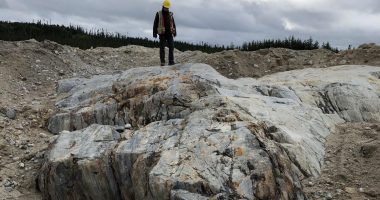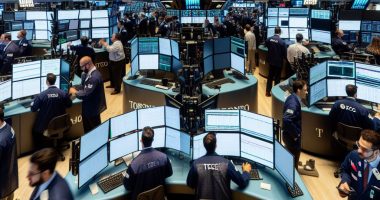Battery metals are certainly the buzzword of 2022 and for a good reason. Not only are battery metals the backbone to EVs, but they also play an integral role in shaping a clean energy future.
Meet Vancouver, BC-based Giga Metals a Canadian-based mineral exploration company with one of the largest undeveloped nickel-cobalt sulphide deposits in the world. Giga Metals hopes to play a key role in supplying the high-quality, sustainably sourced materials that battery manufacturers need to meet global clean-energy demands.
Today we’re happy to be joined by Giga Metals’ CEO & Chairman Mark Jarvis. Thanks for joining us today, Mark.
MH: It’s a challenging time for the markets, can you give us an update on new developments with the Turnagain project? What can investors expect to see in the last half of the year?
Yeah, it is a very challenging time and it’s mostly been caused by China’s zero COVID policy, which has impacted everything in the base metals sphere but to me it’s just a dip. I mean, electric vehicles continue to be adopted ever more rapidly. So I would say it’s one of those dips that you buy because the long term fundamentals remain intact. It’s short-term headwinds but long-term a fundamentally bullish story. What we’re doing is finishing our field program up at Turnagain and that involved mostly just getting the last few bits of information that we need to advance the project to prefeasibility. So it’s all geotechnical drilling and work around our Tailings management facility or where we think our tailings management facility is going and also where we think the waste rocks are going. So not very sexy stuff. We’re not doing resource drilling. We’re not doing exploration, it’s all really development work at this point and so with that done, we’re now turning to actually doing the metallurgy and engineering that will lead to a prefeasibility report, hopefully by the first quarter of 2023.
MH: What’s the most challenging thing about advancing a project of this size and scale in this economic climate?
Well, it’s the classic “tiny company, huge deposit” and these really, really large deposits are expensive to develop, just the sheer amount of drilling that you have to do costs money and then if you’re working with a deposit we’ve got roughly call it a billion tons in the measured and indicated category when with, with another, approximately a billion tons in the inferred category, with an open-pit deposit of that size, you have to understand the metallurgy all across the deposit. So it’s a lot of metallurgical test work. A lot of geo metallurgical work, not the sort of thing that sets the pulse racing but necessary to actually get the project ready to actually build a mine.
MH: A little bit like little room for error and it takes money to make the money
It takes money and that is the major problem of small company having big deposits. So we are conducting an internal process looking for strategic investors to come in at the project level and we think we’re making some good progress there. That is kind of the main transformative event that I would be looking for in the next several months perhaps even sooner and the whole idea is that you can’t keep diluting your stock endlessly or there’s going to be nothing left for the shareholders. So you have to start financing at the project level and what we’re finding is that there is in fact a lot of interest downstream as you get towards the battery makers and even the automobile companies that want to be in the electric vehicle business, the interest is growing in securing supply chains.
The old model where you had supply chains all over the world with just in time inventories has fallen apart. Partly because of the war in Ukraine but also people are less comfortable with entrusting their supply chains to China. So people are very, very interested in having their raw material supply chains close to where they’re going to be making batteries and where they’re going to be making electric vehicles and that sort of vertical integration is becoming the new model and we’re seeing that with the strategics that we’re talking to.
MH: Nickel has been dominating the news in the last six months, what should our audience know about investing in nickel at this time?
Well, it’s interesting because nickel itself has been hit and there’s a whole story to nickel, the aftermath of the big short squeeze and my God, what a story. The volumes on the LME are way down and people are now doubtful that the LME is providing much of a reference price. Yet nickel continues to trade amongst producers and consumers more than anything. So, there’s a bit of a blind spot. Nobody’s sure what the price of nickel is right now because of the unreliability of the LME but that said the prices have come off a little bit again because of China’s zero COVID policies but you will notice that stocks on the LME continue to get lower and lower.
So, particularly for class one nickel, which is what’s deliverable to the LME particularly for briquettes and nickel and various chemical forms including mixed hydroxide precipitous. Those are the two forms of nickel that the battery makers want, briquettes and MHP (Mixed Hydroxide Precipitate) and there’s just not enough briquettes and MHP around. So, Class 2 nickel is plentiful and that’s ferronickel, which feeds the stainless steel business but Class 1 nickel, which is very, very pure nickel is in short supply right now. So, some very complex and interesting dynamics but the bottom line fundamentals are, if you want your electric vehicle to go farther on a single charge you need more nickel in your cathode because nickel’s the part that holds the electrons and so there’s really no substitute for nickel for a long range EVs. So there aren’t enough large deposits in the world to feed the EV business on any projections that most prognosticators have. So, nickel itself, as well as lithium will be the limiting factor in how quickly the EV revolution can go. So, it’s fundamentally a very bullish story right now.
MH: You’ve talked about the “orphan period” of the company before, can you elaborate on this and why investors shouldn’t shy away from this stage?
You’re referring to what’s called the Lassonde Curve where it’s very exciting when discoveries are first made and then you go into the development stage and it’s really not very interesting for investors that crave action. However, it can be a period where the stocks in a company can trade at a very little price as people get bored and then suddenly something will happen where you go, oh my God, this one’s actually going to make it and I would suggest in our case, again, stay tuned. We are working an internal process. We have got excellent people in house. There’s no investment bank in the world that can compete with our people to run this kind of process that we’re running and we think you’re going to start to see some breaks. That is the news to watch for is deal with a strategic partner, that’s going to be the start of the process. Things are going to get exciting again.
MH: Your stock has taken a bit of a hit in the last few months, what can you tell our audience about the current valuation and market cap?
I think we’re something below 30 million Canadian dollars, which to me is a pretty good entry point for something with a deposit our size, the markets of course have been very challenging lately. The big blue chips catch a cold, the little companies catch the flu extremely interesting valuation if you’re an investor and you’re looking for nickel that is ultimately going to be used for cathode materials for batteries.
MH: Green metals and critical minerals are increasingly popular terms, can you tell us how Giga Metals fits into this story?
There’s maybe 15 or 20 really large undeveloped nickel cobalt deposits in the world. Most of them are not sulfide deposits. They are called High Pressure, High Temperature Acid Leach (HPAL) projects and those economics are extremely challenging. Most of the really big undeveloped deposits of the world, including ours and by really big, I say capable of producing say 35,000 tonnes a year of nickel annually. They’re undeveloped because they’re not economic at the low end of the price range for nickel and so they all become economic sort of in the $9 to $12 a pound range for nickel pricing and we are one of the best of the undeveloped deposits.
Our strength as a deposit is that the way we will manufacture nickel from this deposit is exceedingly simple. 99% of our nickel and cobalt are in one mineral called Pentlandite. So you have to do one thing only and that is recover Pentlandite and suppress everything else. That means that you crush it, grind it and float it. It is the simplest and most reliable processing that you can imagine. It’s not a big chemistry experiment, like an HPAL project and it’s not punishing to the environment. I mean no mining project has zero impact on the environment but this one has relatively little impact compared to the amount of nickel you produce and it’s an extremely low carbon project and in fact it may be a carbon neutral project. We’re doing quite a lot of work with UBC on carbon sequestration in our tailings. I can’t prove to you as I stand here today that it’s going to be zero carbon but it will at least be very close. So if you want ethical nickel, this is the place to look for it.
MH: Thanks again for joining us, Mark.
We’ve been speaking with Mark Jarvis, CEO of Giga Metals. If you would like to follow Giga Metals, they trade on the TSX-V under the symbol GIGA.
FULL DISCLOSURE: This is a paid article produced by The Market Herald.



